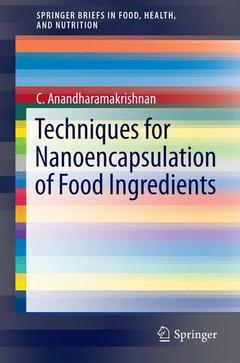Description
Techniques for Nanoencapsulation of Food Ingredients, 2014
SpringerBriefs in Food, Health, and Nutrition Series
Author: Anandharamakrishnan C.
Language: English
Subjects for Techniques for Nanoencapsulation of Food Ingredients:
Keywords
Approximative price 52.74 €
In Print (Delivery period: 15 days).
Add to cart
Publication date: 11-2013
89 p. · 15.5x23.5 cm · Paperback
89 p. · 15.5x23.5 cm · Paperback
Description
/li>Contents
/li>
Nanoencapsulation has the potential to improve human health through its capacity to both protect bioactive compounds and release them at a specific time and location into various substances, including food. Numerous nanoencapsulation technologies have emerged in recent years, each with its own advantages and disadvantages. The goal of this Brief is to discuss the various nanoencapsulation technologies, such as emulsification, coacervation, inclusion encapsulation, anti-solvent precipitation, nanoprecipitation, freeze drying, and spray drying, including their limitations. Recent safety and regulatory issues concerning the various nanoencapsulation technologies will also be covered.
Nanoencapsulation of Food Bioactive Compounds.- Techniques for Formation of Nanoemulsions.- Bioactive Entrapment using Lipid-based Nanocarrier Technology.- Liquid Based Nanoencapsulation Techniques.- Electro-spraying and Electro-spinning technique for Nanoencapsulation.- Drying techniques for Nanoencapsulation.- Applications of food grade Nanoemulsion.- Characterization of nanoparticles.- Safety and Regulations – Current Scenario and Scope.
© 2024 LAVOISIER S.A.S.

